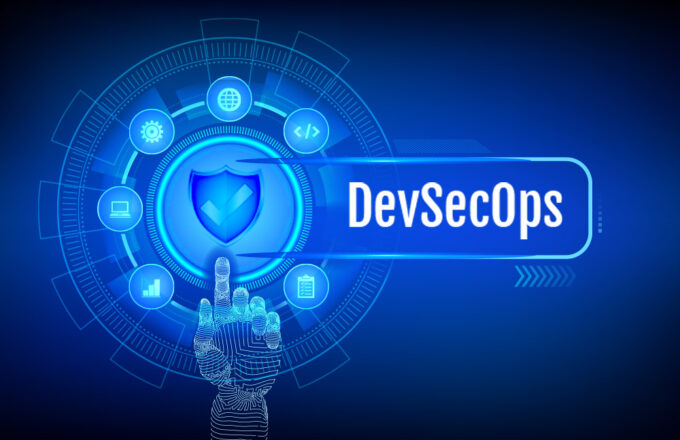In today’s fast-paced digital landscape, your organization’s protection is the cornerstone of its success. Just as a sturdy foundation is essential for a building, embracing DevSecOps services can lay the groundwork for a secure future.
But what exactly is DevSecOps, and why should you care?
Well, let’s explore how this holistic approach to development, security, and operations can not only protect your systems from external threats but also foster a culture of continuous improvement and innovation.
So, buckle up and get ready to discover the key principles, benefits, and strategies for implementing DevSecOps in your organization.
The Importance of DevSecOps Services

Source: integrio.net
Embracing DevSecOps services is crucial for organizations seeking to enhance their security posture while maintaining efficient and agile software development processes. DevSecOps practices in software development play a vital role in addressing protection concerns from the early stages of the development lifecycle. By integrating protection practices into each phase of this process, organizations can proactively identify and remediate vulnerabilities, reducing the risk of security breaches.
One area where integration is particularly important is in cloud environments. As more organizations migrate their applications and infrastructure to the cloud, it becomes essential to ensure that protection isn’t compromised. DevSecOps practices enable organizations to implement security measures that are specifically tailored to the cloud environment they’re operating in. This includes ensuring the secure configuration of cloud services, implementing access controls, and continuous monitoring of cloud resources for potential protection threats.
Additionally, this services provide organizations with the ability to automate protection testing and compliance checks. By automating these processes, organizations can ensure that protection measures are consistently applied across all software releases and deployments. This reduces the risk of human error and ensures that security isn’t an afterthought but an integral part of the process.
Key Principles of DevSecOps Implementation
To successfully implement DevSecOps, organizations must adhere to key principles that promote the integration of security throughout the lifecycle.
The first principle is the establishment of a DevSecOps culture within the organization. This involves creating an environment where protection is considered a shared responsibility and not just the concern of a particular team or individual. It requires fostering collaboration and open communication between developers, operations, and protection teams.
The second principle is automation and integration. Automation plays a crucial role in DevSecOps by enabling continuous security testing and deployment. By automating security checks and scans, organizations can identify vulnerabilities and weaknesses early in the development process.
Integration of protection tools and processes into the development pipeline ensures that protection isn’t an afterthought but an integral part of the lifecycle. This includes integrating security testing and monitoring tools, as well as incorporating security best practices and policies into the development process.
Benefits of Embracing DevSecOps Services

Source: securityintelligence.com
By embracing them, organizations can reap numerous benefits that arise from the integration of security throughout the software development lifecycle. Improving collaboration is one of the primary advantages of adopting these practices.
Traditional models often separate development, security, and operations teams, leading to siloed workflows and communication gaps. However, these teams can collaborate seamlessly, resulting in better alignment of goals and more efficient sharing of knowledge and expertise. This collaboration enables faster identification and remediation of protection vulnerabilities, as protection considerations are addressed from the early stages of development.
Another significant benefit of embracing these services is the streamlining of development processes. DevSecOps emphasizes automation and integration of tools into the development pipeline. By automating testing and incorporating it into the continuous integration/continuous delivery (CI/CD) process, organizations can identify vulnerabilities early and address them promptly. This reduces the time and effort required for manual protection testing, leading to faster software releases without compromising protection.
Furthermore, it helps organizations achieve faster time-to-market by eliminating delays caused by separate assessments and audits. Security is integrated into the development process, ensuring that it’s an inherent part of every release. This allows organizations to meet compliance requirements more efficiently and deliver secure and reliable software to their customers.
Strategies for Implementing DevSecOps in Your Organization

Source: einfochips.com
Implementing DevSecOps in your organization requires careful planning and a systematic approach to integrating protection practices into the lifecycle. To successfully implement DevSecOps, you need to focus on two key strategies: implementing automation and integrating security.
Firstly, implementing automation is crucial for streamlining your process and ensuring security measures are consistently applied. By automating tasks such as vulnerability scanning, code analysis, and compliance checks, you can significantly reduce human error and increase efficiency. Automation tools can also help in continuous monitoring and threat detection, enabling real-time response to potential security issues.
Secondly, integrating security into every stage of the software development lifecycle is vital for a robust approach. This includes incorporating safety requirements in the initial planning and design phases, conducting regular safety testing and code reviews, and implementing secure coding practices. By making security an integral part of development processes, you can proactively identify and address vulnerabilities early on, minimizing the risk of security breaches.
Furthermore, establishing clear communication and collaboration between development, operations, and safety teams is essential for successful implementation. This ensures that all stakeholders are aligned on safety objectives and can work together to address safety concerns throughout the outcome lifecycle.
Best Practices for Maintaining Security
To ensure the ongoing safety of your implementation, it’s essential to follow best practices for maintaining the integrity and protection of your software development process. Continuous monitoring plays a crucial role in identifying and mitigating safety risks throughout the software outcome lifecycle. By implementing a robust monitoring system, you can detect vulnerabilities, unauthorized access attempts, and anomalies in real-time. This allows you to take immediate action and prevent potential breaches.
Secure coding practices are another vital aspect of maintaining safety. By following secure coding guidelines, you can minimize the risk of introducing vulnerabilities into your software. This includes practices such as input validation, output encoding, and proper error handling. Additionally, using secure coding frameworks, such as OWASP Top 10, can help you prioritize safety measures and address common vulnerabilities effectively.
Regularly conducting assessments and penetration testing is crucial for identifying weaknesses in your environment. These assessments should be performed by qualified safety professionals who can identify potential vulnerabilities and recommend appropriate remediation measures.
Furthermore, staying up-to-date with the latest patches and updates for your software components is essential. This includes keeping track of vulnerabilities and applying patches promptly to ensure the security of your environment.
Frequently Asked Questions
What Are the Common Challenges Faced When Implementing Devsecops Services?

Source: testhouse.net
Implementing them presents challenges such as managing complexity and overcoming cultural resistance. You must navigate these obstacles to ensure the successful integration of security into the development and operations processes.
How Can Services Help in Reducing Vulnerabilities?
Integrating safety into the DevOps lifecycle through these services can help you reduce vulnerabilities. Automation plays a crucial role in identifying and fixing issues early, ensuring a secure future.
What Are the Key Differences Between Traditional Software Development Practices and Devsecops?
To understand the key differences between traditional software development practices and this, you need to consider secure development practices and the benefits of implementing it.
How Can Organizations Ensure Smooth Collaboration Between Development, Security, and Operations Teams?
To ensure smooth collaboration between your development, safety, and operations teams, focus on effective communication and overcoming resistance to change. Embrace practices to foster collaboration, automate processes, and prioritize security throughout the software development lifecycle.
Are There Any Specific Tools or Technologies That Are Recommended for Implementing Devsecops Services?
To implement these services, recommended tools and technologies include Jenkins for continuous integration, SonarQube for code quality analysis, and Docker for containerization. These help streamline collaboration and ensure security throughout the development process.







